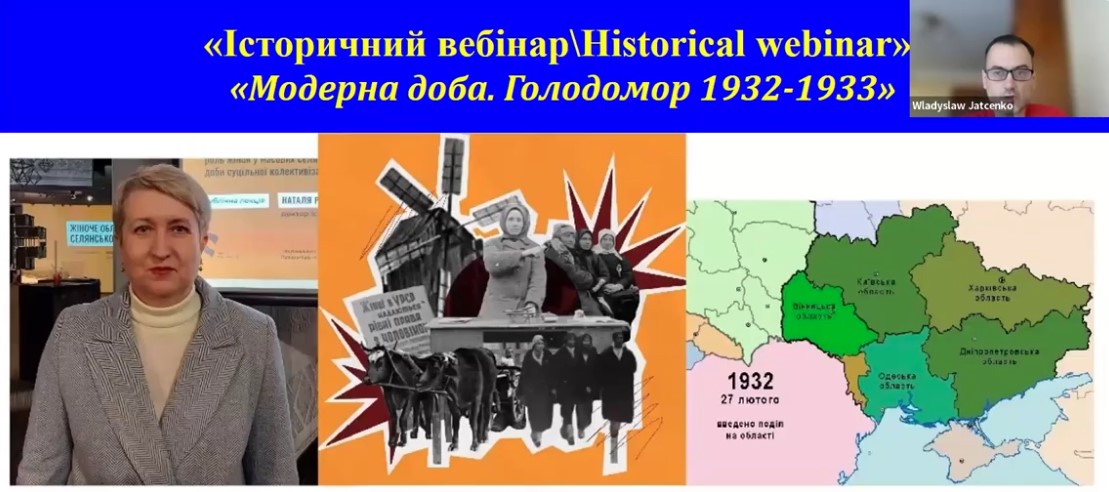During the webinar, Nataliia Romanets spoke about women’s resistance.
Nataliia Romanets, a senior researcher at the Holodomor Museum, Doctor of Historical Sciences, and professor, gave an online lecture on women’s resistance on the Historical Webinar platform.
As the researcher notes, mass protests, in which women played a leading role, were the main form of active peasant resistance during the era of total collectivisation and the Holodomor in Ukraine. In the documents of the OGPU, the GPU of the Ukrainian SSR, the justice authorities, party documents, and Soviet documents, the mass peasant women’s protests of 1928–1932 against dekulakisation, collectivisation, and grain requisitioning were referred to as riots, rebellions, women’s uprisings, and revolts. The authorities explained the active participation of peasant women in the uprisings by “kulak influence,” the women’s lack of education and conservatism, the patriarchal nature of peasant society, “certain distortions of party policy” during collectivisation and dekulakisation, and the “excessively lenient attitude of the repressive authorities” towards participants in mass unrest. In fact, the women’s protest was a reaction to Stalin’s destructive agrarian policy, which threatened not only the well-being but also the very existence of peasant families, as proven by the events of 1932–1933.
We bring to your attention a webinar recording.
